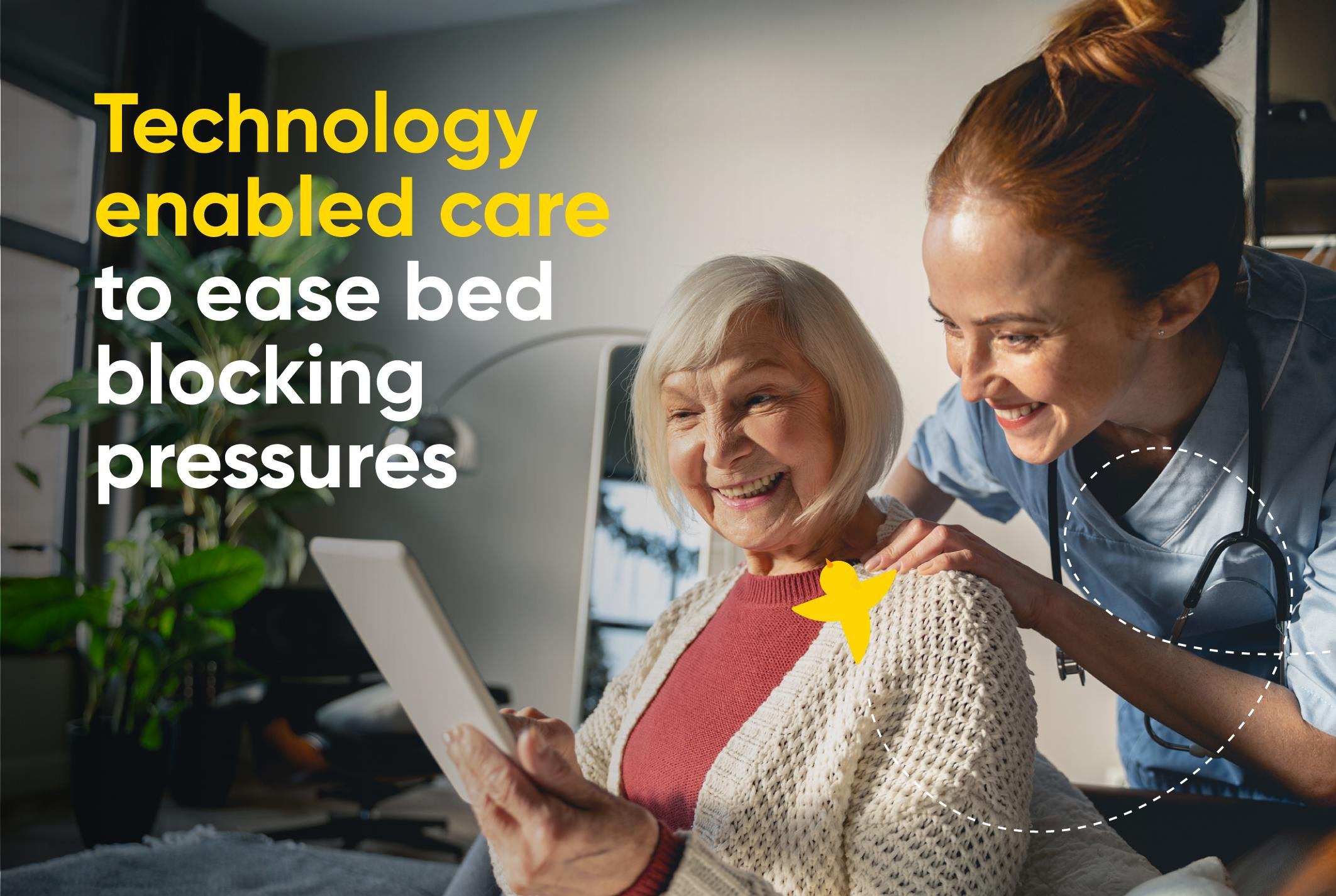How Elderly Care Technology Helps Unblock Hospital Beds
Our NHS is under increasing strain due to the vast number of delayed discharges, with many patients remaining in hospital despite being medically fit to leave. A major factor of this is the need to coordinate adequate support at home.
Elderly care technology, such as Canary Care’s remote home monitoring system, is stepping in as a vital solution – enabling quicker, safer discharges while promoting independent living. These tools not only improve outcomes for patients, but deliver cost-effective benefits for the NHS, offering a path toward a more resilient and effective healthcare model.
The Impact of Bed Blocking on Hospitals and Patients
A significant challenge facing the NHS is that an increased number of patients are experiencing delayed discharges – whereby someone is deemed medically fit to leave hospital but is not yet discharged.
Many organisations, hospitals, and NHS Trusts are looking to find new ways to reduce admissions and re-admission after discharge. Recently, in the 2024/25 Winter Letter, Minister of State for Care, Stephen Kinnock, set out key priorities to empower the operational resilience of adult social care this winter. He highlights an “absolute focus” on the prevention of avoidable hospital and care home admissions to support independent living where possible and a better patient care experience.
Reasons for Delayed Discharges
In May 2024, the primary reason for delays among patients hospitalised for seven days or longer was the need to arrange further support at home after discharge (23%), which can be coordinated by NHS community or adult social care services.
The total number of delayed patients in acute hospitals ready to be discharged had increased by 43% from an average of 8,545 patients per day in June 2021, to 12,223 patients per day in June 2024 – peaking at 14,096 in January 2024.
While social care is undoubtedly crucial in enabling older and vulnerable individuals to transition from hospital to home, additional measures can be taken to support both them and their carers within the community.
Technologies Supporting Elderly Care
Technology-enabled care (TEC) devices, such as Canary Care’s remote home monitoring system, can play an enormous part in getting people home, and keeping them at home. We know that independent living for the elderly and vulnerable is important to them and, if they are well enough, being at home, feeling safe and confident, has a positive impact on their health and wellbeing.
Information plays a vital role in helping us care better and more effectively – not just to provide the much-needed cost savings, but to ensure people receive the right care, at the right time. Technology can provide this information – the insight, for example, that someone isn’t going into the kitchen at mealtimes, or that they are not putting themselves to bed or getting up several times in the night.
By gathering this information, we can understand a person’s individual needs better – and look after them better. Makes more sense, doesn’t it?
Cost-Benefit Analysis of Elderly Care Technology
Elderly care technology provides a cost-effective alternative for both local authorities and the NHS. Despite the fact initial costs can be expensive, the long-term cost benefits, when technology-enabled care is implemented correctly, can make it incredibly worth it.
For the financial year 2024/25, the Department of Health and Social Care recorded that the individual cost of an A&E visit could vary from £91 to £445 – with the estimated cost of an ambulance attending an emergency costing between £287 to £417. In October 2024 alone there were over 2.3 million visits to A&E for both minor and major admissions, with 34.5% of ambulance callouts being made up of people aged over 75 years old on average.
Stephen Kinnock notes that the NHS should be making the most effective use of same-day emergency care and virtual wards to prevent unnecessary time spent in hospital. The Health Innovation Network, South London, indicates that with the support of technology-enabled care systems, a virtual ward stay can cost up to an average of £1,958 less per patient than a typical inpatient hospital stay (the range being £357 - £4,500).


